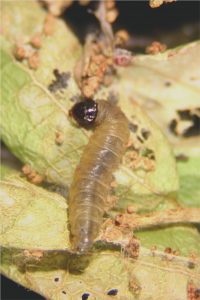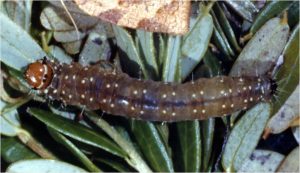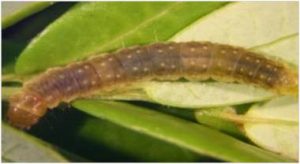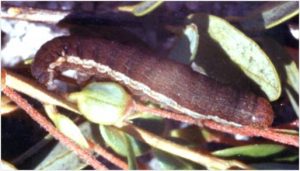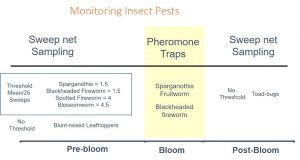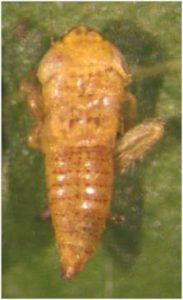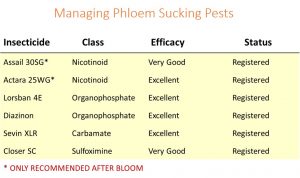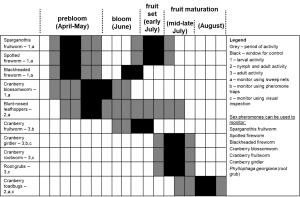We are observing high populations of gypsy moth larvae in cranberry beds near wooded areas. The last time we saw these numbers was over a decade ago in 2007-2008. I am showing a graph (Figure 1) that illustrates the number of lepidopteran pests (gypsy moth, spotted fireworm, Sparganothis fruitworm, armyworms, cranberry blossomworm, and spanworms) observed in 2008 in various cranberry beds (from bud break to bloom). The graph shows the timing when gypsy moth larvae were found in beds in comparison with other common leps. Based on these data, number of gypsy moth larvae peaked at this time of the year and then decline in the following two weeks. It also shows an overlap of gypsy moth numbers with the numbers of spotted fireworm and Sparganothis fruitworm in beds. This indicates that treatment for gypsy moth should also control these other pests if the residue lasts for 10-14 days.

Figure 1. Number of Lepidopteran Larvae in 2008 Sweep net Samples
Biology. Gypsy moth has one generation a year. It overwinters as eggs. Eggs hatch at this time of the year (we should have already passed peak egg hatch). First instars “balloon” on silken threads from infested trees onto nearby cranberry beds. Thus, gypsy moths tend to be one of the earliest caterpillars to show up in cranberry beds, usually during the first week of May. Observed larvae are mostly 2nd instars and will feed on the terminal buds. Although less common, it is also possible that eggs overwintered on the bog floor and that older larvae will crawl later in the season onto beds from surrounding trees.
Scouting and Control – Gypsy moth larvae are quite easy to detect by means of sweep net sampling and are easy to control with most of the insecticides at our disposal. The action threshold for gypsy moth is an average of 4.5 larvae in sets of 25 sweeps. We recommend the use of Intrepid, Delegate, Altacor, Exirel, or Verdepryn, if populations exceed action thresholds. These are reduced-risk insecticides that are very effective against lepidopteran pests.
